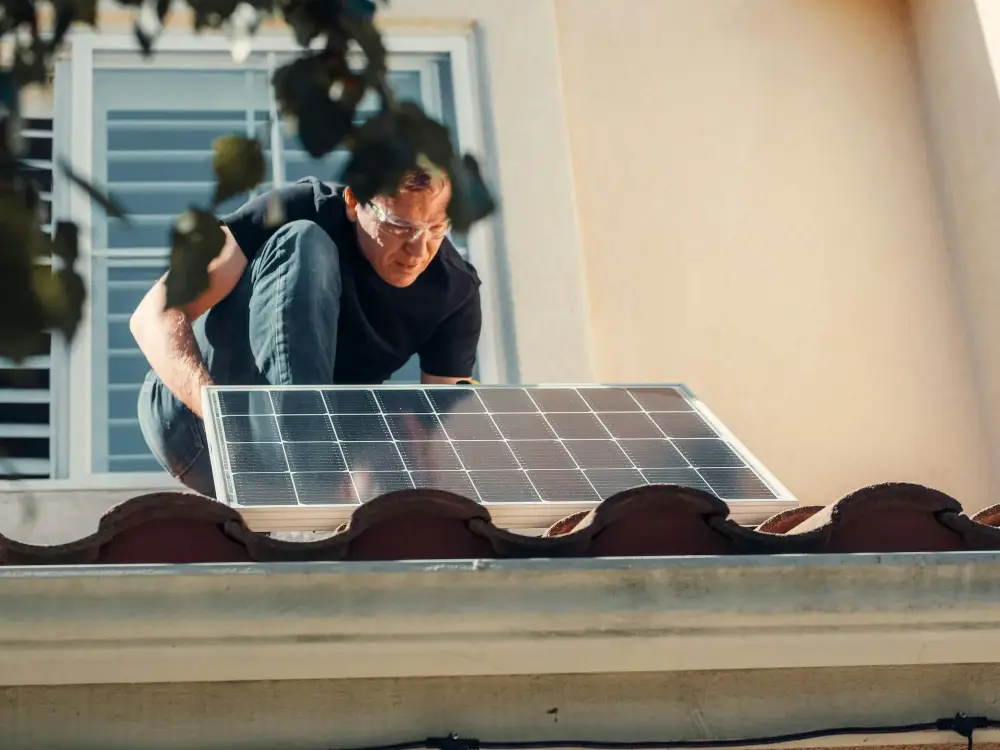Installing solar panels at home is a significant investment that can greatly reduce your energy bills and environmental impact. This process involves several important steps, from selecting the right system to ensuring proper installation. Although professional installation is recommended for most people, understanding the process can help homeowners make informed decisions and potentially tackle part of the setup themselves. Here are the complete details in the following that how to Install Solar Panels at Home
Understanding Solar Energy Systems
Before installing solar panels, it’s essential to understand how solar power systems work. Solar panels convert sunlight into electricity, typically through photovoltaic (PV) cells. These panels generate direct current (DC) electricity, which is then converted to alternating current (AC) through an inverter, making it usable in your home. Additionally, if your system is grid-tied, any excess electricity produced can be sent back to the grid, and you may receive credits through a process called net metering.
There are different types of solar power systems available, such as on-grid, off-grid, and hybrid systems. On-grid systems are the most common for residential use, as they allow you to remain connected to the utility grid and do not require expensive battery storage. Off-grid systems, on the other hand, require battery storage for times when sunlight is not available but offer complete energy independence.
Evaluating Your Home’s Solar Potential
Before installing solar panels, you must assess your home’s solar potential. Factors such as roof orientation, angle, and shading significantly impact the efficiency of your system. South-facing roofs receive the most sunlight in the northern hemisphere, making them ideal for solar panels. East and west-facing roofs can also work, but they might produce slightly less energy.
It’s important to inspect your roof for any obstructions such as trees, chimneys, or other buildings that may cast shadows over the panels. If your roof is heavily shaded, it could reduce the efficiency of your system, meaning fewer energy savings. In such cases, you may need to trim trees or consider installing solar panels on another part of your property.
Calculating Energy Needs and Choosing the Right System
Understanding your home’s energy consumption is crucial to determining the size of the solar panel system you need. You can calculate this by reviewing your electricity bills to find your average monthly or yearly energy usage, typically measured in kilowatt-hours (kWh). Once you have a clear idea of your energy consumption, you can choose a solar panel system that meets your needs.
Most residential solar panels have a power output rating between 250 to 400 watts. By multiplying the panel’s wattage by the number of sunlight hours your home receives, you can estimate the energy production for your system. This helps you decide how many panels you’ll need to cover your electricity usage.
Installing the Mounting System
The first step in the physical installation process is setting up the mounting system. This structure will hold your solar panels securely in place on your roof. The mounting system must be installed at the correct angle to maximize sunlight exposure throughout the day. For a fixed roof system, the angle will usually be determined by the slope of your roof, but for ground-mounted systems, the angle can be adjusted manually.
It’s important to ensure the mounting system is installed securely and can withstand harsh weather conditions. Additional reinforcements may be required if you live in an area prone to strong winds or heavy snow. While installing the mounting system, take care not to damage your roof, as this could lead to leaks or other structural issues.
Installing the Solar Panels
The solar panels can be attached once the mounting system is in place. Each panel must be securely fastened to the mounts, ensuring they are aligned correctly to capture maximum sunlight. Care must be taken during this step to avoid damaging the panels, as they are delicate and expensive.
After the panels are in place, wiring is connected to link the panels to the inverter, which will convert the electricity from DC to AC. It is crucial to hire a licensed electrician for this step, as improper wiring can lead to electrical faults or even fires. The inverter is usually installed near your home’s main electrical panel.
Connecting to the Grid
If you’re installing a grid-tied solar system, the final step is to connect the system to your local utility grid. This step typically involves a formal inspection by the utility company to ensure that the system meets all safety standards and local regulations. Once the inspection is complete, the utility company will approve the system and switch it on, allowing your home to start using solar energy.
In some cases, you may also need to install a bi-directional meter. This special meter records both the energy your home consumes from the grid and the excess energy your solar panels send back to the grid. This setup allows you to take advantage of net metering and receive credits on your utility bill.
Maintenance and Monitoring
After installation, maintaining your solar panel system is relatively simple. Panels should be cleaned periodically to remove dust, dirt, and debris that can reduce their efficiency. Additionally, monitoring your system’s performance is essential to ensure it’s operating at full capacity. Most modern solar systems come with monitoring software that allows you to track energy production in real time.
In conclusion, installing solar panels at home is a multi-step process that requires careful planning, assessment, and professional installation. From understanding your home’s solar potential to choosing the right system and ensuring proper installation, each step plays a vital role in the success of your solar energy system. By investing in solar power, homeowners can enjoy significant savings on energy bills and reduce their environmental impact.

